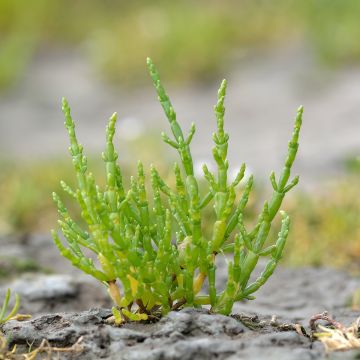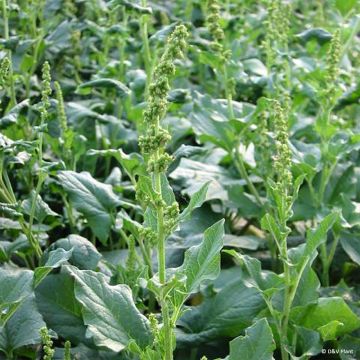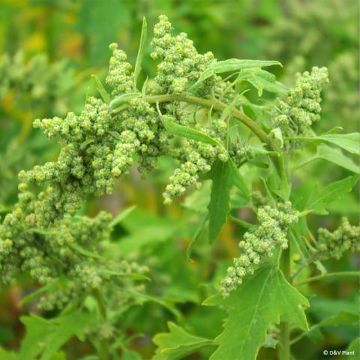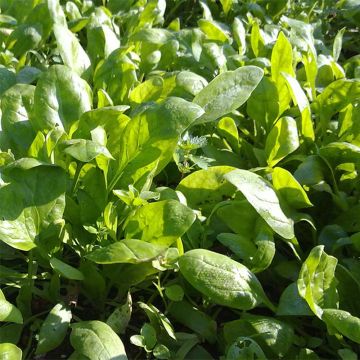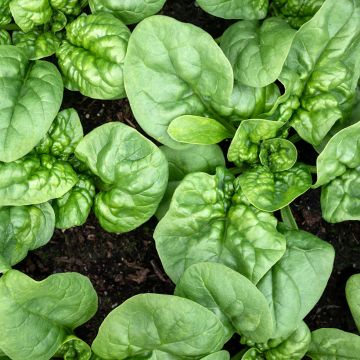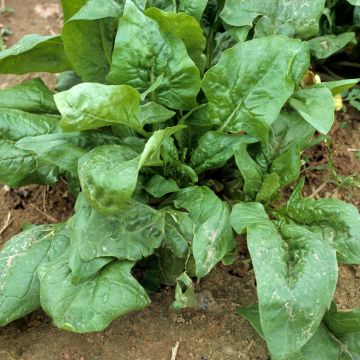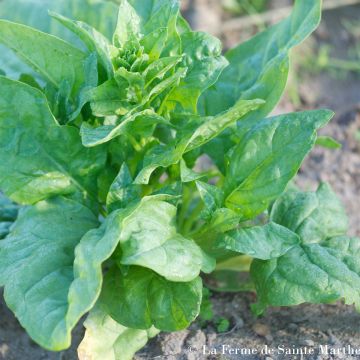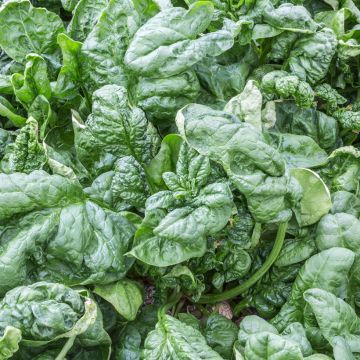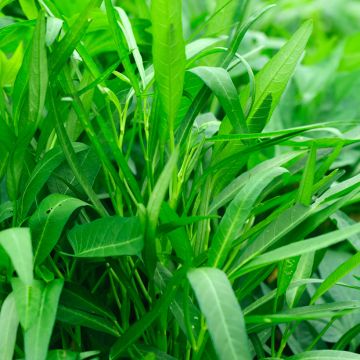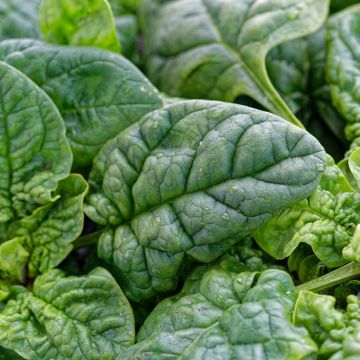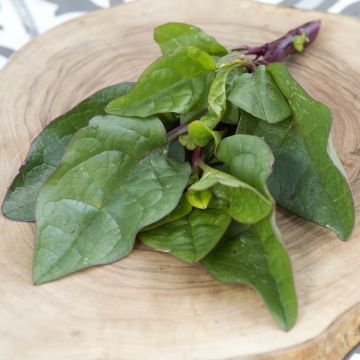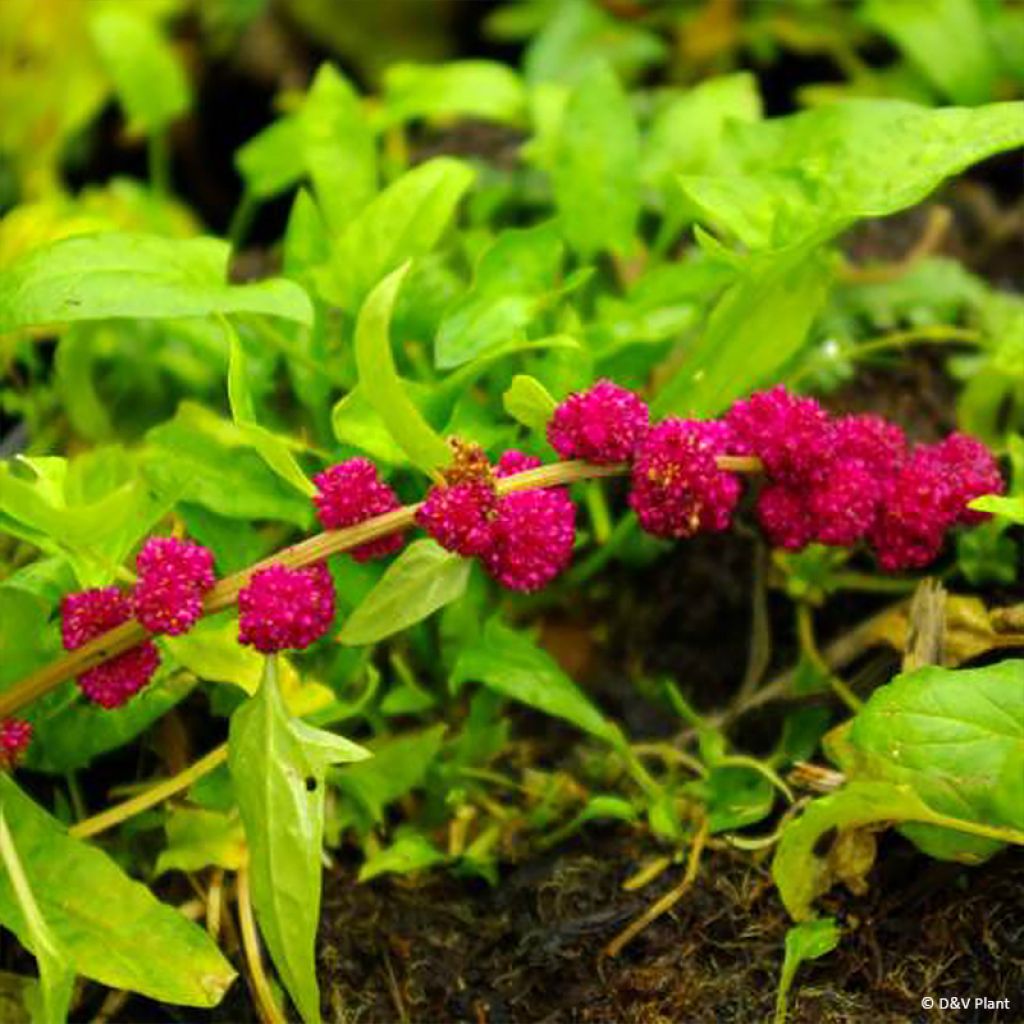

Epinard Fraise - Chenopodium capitatum
Strawberry Spinach - Chenopodium capitatum
Blitum capitatum
Eye-hurt, Strawberry blite, Strawberry spinach, Indian paint, Indian strawberry
Why not try an alternative variety in stock?
View all →This plant carries a 6 months recovery warranty
More information
We guarantee the quality of our plants for a full growing cycle, and will replace at our expense any plant that fails to recover under normal climatic and planting conditions.
From €5.90 for pickup delivery and €6.90 for home delivery
Express home delivery from €8.90.
Delivery to Corse prohibited: UE law prohibits the import of this plant from mainland France to Corse as part of the fight against Xylella fastidiosa. Please accept our sincere apologies.
More information
Description
Blitum capitatum, also known as strawberry spinach or strawberry blite, is a forgotten vegetable that is unique and decorative. It is a variety of goosefoot with sagittate and dentate leaves, whose shiny and magenta-coloured fruiting resembles that of a raspberry rather than a strawberry. It occurs from June to October and is arranged in clusters of 3 to 5 in the axils of the leaves. Both the leaves and the juicy fruits are edible. The leaves have a nutty flavour and can be prepared like spinach. The fruits taste of slightly acidic beets rather than strawberries. However, care should be taken not to consume large quantities of leaves and fruits, as they contain a high amount of saponin and oxalic acid.
Strawberry spinach forms a 30 to 60cm (12 to 24in) bush in one year, resembling a small holly with its red berries from late spring to mid-autumn, proving once again that the vegetable garden can be both aesthetic and nourishing. You can plant this unique annual from March to May to enjoy its leaves and fruits from spring to autumn. After that, it will self-seed spontaneously if a few berries remain on the vegetation. It is an undemanding plant that can also be grown in pots.
This is a unique and tasty vegetable herb that can be used in a thousand ways. Eat the leaves in spring salads, in mixed greens, in Japanese tempura, quickly cooked in a wok, or even in savoury tarts with small pieces of goat's cheese or salmon. The fruits enhance sweet salads.
Strawberry spinach is native to Asia. It is easy to grow and adapts to all types of slightly moist soils in non-burning sun. Both the leaves and the fruits are edible, so you can use this vegetable almost all year round. It appreciates consistent, moist, and rich soils, especially those high in nitrogen and potassium.
Harvest: the leaves and fruits can be harvested according to their growth and your needs.
Storage: the leaves do not keep well in a refrigerator as they tend to become soft. It is best to consume them a few hours after harvesting. However, you can freeze them after blanching them for 3 minutes in salted boiling water. As for the fruits, you can let them dry in a dry and ventilated place. They can be used to enhance a fruit salad or release their fragrance in potpourri.
Gardener's tip: strawberry spinach thrives among rows of chicory and lettuce, which reciprocate the favour.
Report an error about the product description
Harvest
Plant habit
Foliage
Other Spinach
Planting and care
Cultivation
Strawberry spinach is a fairly demanding vegetable, especially in terms of nitrogen and potash. It requires well-fertilised and well-drained soil that does not dry out throughout the growing period. Avoid excessively hot exposures. It is advisable to apply fully-decomposed compost in autumn (about 3kg per m²) to loosened soil, raking it in to a depth of 5cm (2in). An application of nitrogen fertiliser such as "blood and bone" is often welcome.
Some spinach varieties are quite susceptible to mildew, a fungal disease that occurs in mild and humid weather. Be careful not to sow too densely to aid good airflow. Crop rotation remains the best prevention.
As for companion planting, spinach is a good neighbour that does not harm any other vegetable. In fact, it is known to benefit from being grown alongside cauliflower, cabbage, potatoes, and radishes, as it enhances their yields. Gertrude Franck, an exceptional gardener, used to interplant a row of spinach between each row of vegetables, which served both as a culinary ingredient and green manure.
Cultivation
Care
Intended location
This item has not been reviewed yet - be the first to leave a review about it.
Haven't found what you were looking for?
Hardiness is the lowest winter temperature a plant can endure without suffering serious damage or even dying. However, hardiness is affected by location (a sheltered area, such as a patio), protection (winter cover) and soil type (hardiness is improved by well-drained soil).

Photo Sharing Terms & Conditions
In order to encourage gardeners to interact and share their experiences, Promesse de fleurs offers various media enabling content to be uploaded onto its Site - in particular via the ‘Photo sharing’ module.
The User agrees to refrain from:
- Posting any content that is illegal, prejudicial, insulting, racist, inciteful to hatred, revisionist, contrary to public decency, that infringes on privacy or on the privacy rights of third parties, in particular the publicity rights of persons and goods, intellectual property rights, or the right to privacy.
- Submitting content on behalf of a third party;
- Impersonate the identity of a third party and/or publish any personal information about a third party;
In general, the User undertakes to refrain from any unethical behaviour.
All Content (in particular text, comments, files, images, photos, videos, creative works, etc.), which may be subject to property or intellectual property rights, image or other private rights, shall remain the property of the User, subject to the limited rights granted by the terms of the licence granted by Promesse de fleurs as stated below. Users are at liberty to publish or not to publish such Content on the Site, notably via the ‘Photo Sharing’ facility, and accept that this Content shall be made public and freely accessible, notably on the Internet.
Users further acknowledge, undertake to have ,and guarantee that they hold all necessary rights and permissions to publish such material on the Site, in particular with regard to the legislation in force pertaining to any privacy, property, intellectual property, image, or contractual rights, or rights of any other nature. By publishing such Content on the Site, Users acknowledge accepting full liability as publishers of the Content within the meaning of the law, and grant Promesse de fleurs, free of charge, an inclusive, worldwide licence for the said Content for the entire duration of its publication, including all reproduction, representation, up/downloading, displaying, performing, transmission, and storage rights.
Users also grant permission for their name to be linked to the Content and accept that this link may not always be made available.
By engaging in posting material, Users consent to their Content becoming automatically accessible on the Internet, in particular on other sites and/or blogs and/or web pages of the Promesse de fleurs site, including in particular social pages and the Promesse de fleurs catalogue.
Users may secure the removal of entrusted content free of charge by issuing a simple request via our contact form.
The flowering period indicated on our website applies to countries and regions located in USDA zone 8 (France, the United Kingdom, Ireland, the Netherlands, etc.)
It will vary according to where you live:
- In zones 9 to 10 (Italy, Spain, Greece, etc.), flowering will occur about 2 to 4 weeks earlier.
- In zones 6 to 7 (Germany, Poland, Slovenia, and lower mountainous regions), flowering will be delayed by 2 to 3 weeks.
- In zone 5 (Central Europe, Scandinavia), blooming will be delayed by 3 to 5 weeks.
In temperate climates, pruning of spring-flowering shrubs (forsythia, spireas, etc.) should be done just after flowering.
Pruning of summer-flowering shrubs (Indian Lilac, Perovskia, etc.) can be done in winter or spring.
In cold regions as well as with frost-sensitive plants, avoid pruning too early when severe frosts may still occur.
The planting period indicated on our website applies to countries and regions located in USDA zone 8 (France, United Kingdom, Ireland, Netherlands).
It will vary according to where you live:
- In Mediterranean zones (Marseille, Madrid, Milan, etc.), autumn and winter are the best planting periods.
- In continental zones (Strasbourg, Munich, Vienna, etc.), delay planting by 2 to 3 weeks in spring and bring it forward by 2 to 4 weeks in autumn.
- In mountainous regions (the Alps, Pyrenees, Carpathians, etc.), it is best to plant in late spring (May-June) or late summer (August-September).
The harvesting period indicated on our website applies to countries and regions in USDA zone 8 (France, England, Ireland, the Netherlands).
In colder areas (Scandinavia, Poland, Austria...) fruit and vegetable harvests are likely to be delayed by 3-4 weeks.
In warmer areas (Italy, Spain, Greece, etc.), harvesting will probably take place earlier, depending on weather conditions.
The sowing periods indicated on our website apply to countries and regions within USDA Zone 8 (France, UK, Ireland, Netherlands).
In colder areas (Scandinavia, Poland, Austria...), delay any outdoor sowing by 3-4 weeks, or sow under glass.
In warmer climes (Italy, Spain, Greece, etc.), bring outdoor sowing forward by a few weeks.

































